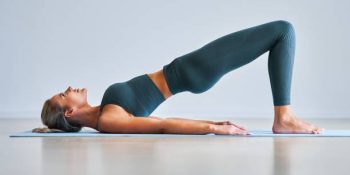
Jumping for joy over strong bones
July 31, 2019
What starts low, increases until 35-40 and then starts to decline….
…….No not your hairline, but your bone mineral density, commonly know as your bone strength!
Our bones are constantly changing and often in later life, our bones can become brittle and weak which we term osteopenia and osteoporosis (osteo = bones / porosis = porous or weak).
Having poor bone health can lead to an array of health concerns including loss of height as well as increased risk of bone fracture. In 2012, 4.74 million Australians over 50 years of age (66% of people over 50) have osteoporosis or osteopenia or poor bone health and 1 person experiences a fracture every 3.6 minutes!
Osteoporosis prevalence increases as we age and tends to affect more females than males due to menopause. If you are at risk of poor bone health your Doctor will likely send you for bone density testing in the form of a DXA scan. This is a quick and easy test which indicates if your bone density is below average. A diagnosis of osteopenia or osteoporosis isn’t the end of the world! However, it’s a good wake up to make some lifestyle changes to prevent it progressing.
When we move, whether it be walking, stepping, jumping, lunging we are placing reaction forces upon our bones. In response, our body sends calcium and minerals to our bones which strengthens them. The greater the reaction forces placed on our bones, the greater the positive adaption in response. In addition, exercise will also improve your muscle strength and balance, both of which play an important role in keep you on your feet and reducing your risk of falls!
As we said the greater the reaction forces placed on our bones, the greater the responding adaptation. Exercises which place strain onto our bones are best. This includes weight training, impact training and plyometric activities such as hopping, jumping and stepping classes. Its recommended to complete a variety of types of exercise as each has its own benefits. We should be doing some form of exercise each day and keeping active across our day. An example of a weekly exercise program to improve bone strength is:
Monday – Resistance Training & Plyometrics
Tuesday – Walking
Wednesday – Resistance Training & Plyometrics
Thursday – Impact and step class
Friday – Resistance Training & Plyometrics
An Exercise Physiologist can work with you to design a suitable and safe exercise program to help keep your bones strong. As always consult with your GP prior to starting unaccustomed exercise and raise to topic of bone health. For more information or to learn how an Exercise Physiologist can improve your health and well-being, send us a message and one of our Exercise Physiologists can take the time and answer your questions.
Other News
Why Runners should do Pilates
Why runners should do Pilates? Simple, it will make you a better run...
June 23, 2023
Managing POTS through exercise
Struggling with exercise since being diagnosed with POTS? This one’s for ...
April 24, 2023
Exercise in Stroke Rehabilitation!
Strokes occur when blood supply to your brain is stopped. This can be tempo...
March 10, 2023







